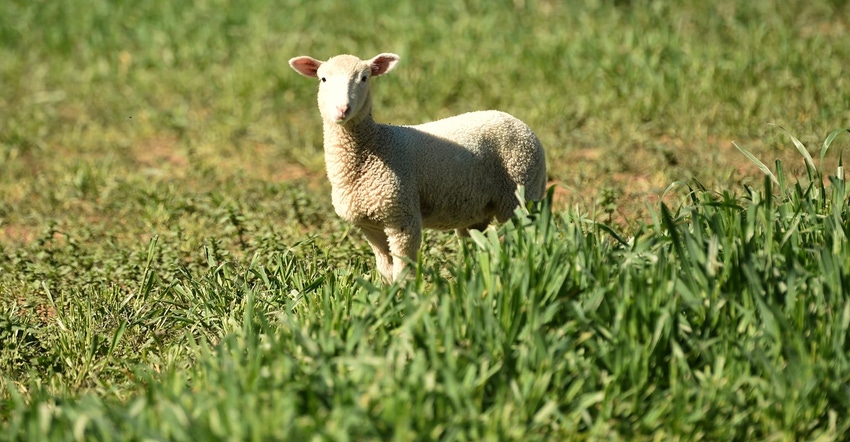August 6, 2020

The sheep industry has reasons to be optimistic.
As with other segments of the livestock industry, the COVID-19 pandemic has taken its toll on the sheep industry.
“But despite a tumultuous first six months of the year, I hope that we can look forward with positivity,” says Travis Hoffman, North Dakota State University Extension sheep specialist. “There is reason to believe the worst is behind us.”
For example, North Dakota had the highest year-over-year percent increase in ewe numbers from 2019 to 2020.
“The real question is, how shall we move forward with marketing of the 2020 lamb crop?” Hoffman says. “Right now, most sheep producers still have their lambs on feed at home, as not very many have been marketed.”
This spring finished market lambs brought lows of $75 to 80 per cwt, and now prices regionally are above $130 per cwt for 120- to 150-pound lambs. “Nontraditional,” or ethnic-market, lambs stayed strong this year, and most estimate more than 50% of the lambs born are harvested in the 60- to 80-pound range nationally.
The Colorado lambs on feed number is a U.S. sheep industry indicator of available supply. For June and July, this quantity was below last year’s and the five-year average.
“This indicates that we are current in supply, and that is refreshing as slaughter numbers are 8% lower than last year at this time,” Hoffman says. “Restaurant business has slowed in the second quarter and retail quantity absorbed some of the product, but importantly, we are back to 38,000 head per week at federally inspected plants and consistently merchandising American lamb.”
Feeder lambs at Central Livestock Auction, West Fargo, N.D., brought $165 to 180 per cwt, and prices at Sioux Falls, S.D. Regional Livestock showed additional strength. For example, prices were from $177 to 190 per cwt for 70- to 80-pound lambs the week of July 10, and they rose sharply to $210 to $220 per cwt the week of July 17. This demand partly is attributed to the Eid al-Adha holiday at the end of July.
Hoffman advises producers to use the available resources to determine profit potential on their respective operation. He notes that the University of Wyoming has a break-even tool available online. This resource can analyze current feeder value and value with adjusted input costs. Then the tool can derive a breakeven price for finished weight lambs to assist with decision making.
“There is a lot of indecision and volatility in today’s market and world,” Hoffman says. “The feedlot inventory is low, but many producers still have lambs that may all be reaching market weight in a short September-October time frame.
“As we evaluate our sheep operations, how much risk-reward are you willing to tolerate, and is this the year that you choose to finish your own lambs to market?” he says. “Western North Dakota is battling drought, some producers have access to cheap feed, and supply-demand for this fall is an unknown. We must each evaluate our resources, time and risk aversion to determine if our 2020 lamb crop should stay or should it go.”
Source: NDSU Extension Service, which is solely responsible for the information provided and is wholly owned by the source. Informa Business Media and all its subsidiaries are not responsible for any of the content contained in this information asset.
Read more about:
SheepYou May Also Like




